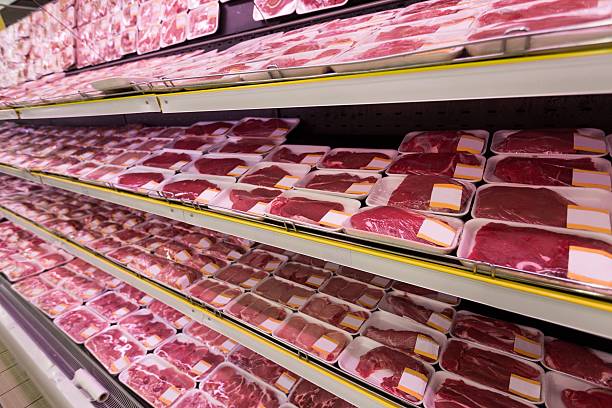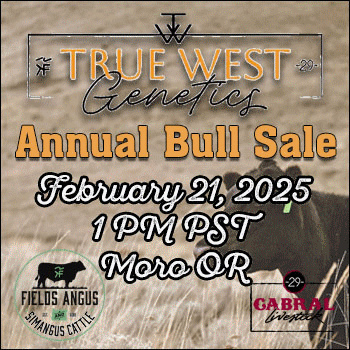According to government data released, the average price of a pound of 100 percent ground beef rose to $6.12 last month, up from $5.98 in May and $5.47 in June 2024. Experts have said this trend shows no signs of slowing, meaning there may be upward pressure on prices through 2026 and beyond.
"It might be at least two to three years before we would see any significant change on the supply side that would ultimately lead to some moderation in beef prices," agricultural economist Derrell Peel told Newsweek.
Why It Matters
The rising cost of staple agricultural products such as beef and eggs has further strained household budgets in 2025, as well as the budgets of businesses reliant on the sales of these items. In addition to having an outsize effect on inflation data, summer price increases are hitting during the peak months—when beef sales traditionally peak because of outdoor gatherings—further underscoring the growing issue.
What To Know
June marked the first month since data collection began in the 1980s that ground beef prices rose above $6 per pound. According to the Consumer Price Index released by the Bureau of Labor Statistics on July 15, steaks saw the largest increase among beef products in June—up 12.4 percent since June 2024 at an unadjusted rate, followed by ground beef at 10.3 percent. This compares to a 0.5 percent increase for pork products and 3.9 percent for chicken.
These price pressures are due to several factors, both short- and long-term—with shrinking cattle herds in the U.S. a leading cause.
"We're dealing with lower supplies of beef, and that's what's really driving up our prices of beef right now," Courtney Schmidt, a sector manager within Wells Fargo's Agri-Food Institute, told Axios.
"This is a situation that's been developing for several years," Peel told Newsweek, adding that the droughts regions of the U.S. have faced since 2020 have pushed cattle numbers to their lowest levels in decades.
Drought conditions, elevated grain prices, inflation and rising interest rates have significantly increased the cost of cattle farming in recent years, leading farmers to trim the size of their herds. According to the latest count from the U.S. Department of Agriculture (USDA), as of January 1, there were 86.7 million cattle and calves on U.S. farms, the smallest number since 1951.
Leaner supply has increased the market value of cows in the U.S., with cattle now selling for more than $200 per hundredweight, or 100 pounds, and calves going for almost $400. According to David Anderson, a livestock economist at Texas A&M who spoke with ABC News, this has led many ranchers to sell their cows now to lock in profits instead of keeping them for breeding, given prices may settle in the future.
Peel said that because of the nature of the cattle industry, the issues of scarce inventory would take years of readjustment to fix.
"Once you get to a situation like this, where we don't have enough inventory to maintain production, the only way to fix it is to actually make that tight supply even tighter," he said. "Because in the cattle industry, they only have one offspring at a time. They have one calf at a time. And if that calf is a heifer, and you want to use her for breeding to rebuild the herd, then you have to not use her for beef production in the short run."
Aside from these long-term developments, an infestation of the flesh-eating parasites screwworms in Mexican herds prompted the USDA to suspend imports from the country.
The prospect of new tariffs on countries the U.S. sources beef from also threatens to further raise prices in the U.S. Per the USDA, most of the U.S.'s beef imports come from Canada, Australia, Brazil, Mexico and New Zealand.
Canada and Mexico were two of the first nations to be subject to President Donald Trump's tariffs, which have been ramped up in recent days. Barring a major breakthrough in trade negotiations, they will likely see their beef subject to rates of upwards of 25 percent.
Brazil, meanwhile, was recently threatened with a blanket 50 percent tariff. In his announcement via Truth Social, Trump said the country had imposed unfair trading barriers that had left the economic relationship "far from reciprocal." He also mentioned his frustration with Brazil's treatment of former President Jair Bolsonaro, who is on trial on charges of attempting to overturn his 2022 election loss.
What People Are Saying
Patrick Montgomery, the CEO and a co-founder of the Kansas City Cattle Company, told Axios that the latest price increases were "just the tip of the iceberg."
He added: "Prices for beef will continue to be tumultuous for the next two to four years."
Derrell Peel, an agricultural economist, told Newsweek that the U.S. was at the "very, very early" stages of the herd-rebuilding process, and that it would be years before that translated into increased production and price moderation.
He added: "I anticipate that it's going to get tighter before it gets better, which probably means that prices will continue to go even a little higher than they are."
What Happens Next
The USDA expects domestic beef production to be slower in the second half of the year, though beef imports are set to increase through 2025 and 2026.
Source: Newsweek
Articles on The Cattle Range are published because of interesting content but don't necessarily reflect the views of The Cattle Range.











